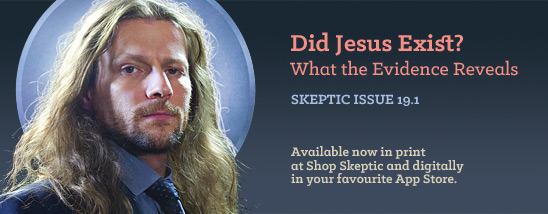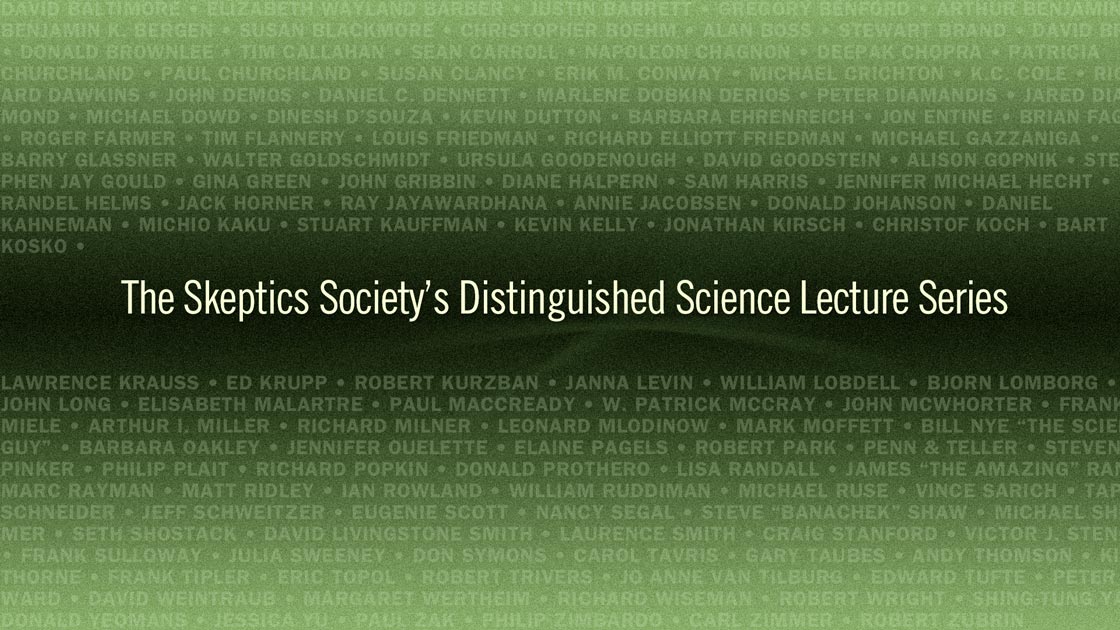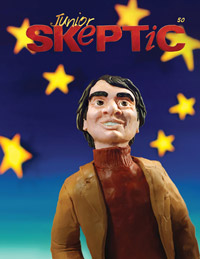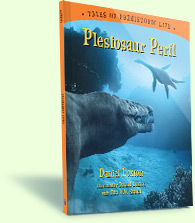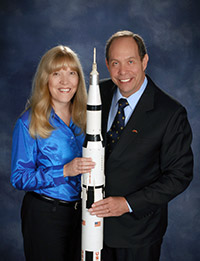In this week’s eSkeptic:
- Available Now: Skeptic magazine 19.1: Did Jesus Exist?
- Follow Michael Shermer: The Awe Delusion
- Science Lecture this Sunday: Dr. Gregory Clark: Social Mobility
- Follow Daniel Loxton: Sagan Versus the Flying Saucers
- Feature: Cosmos Reboots
- MonsterTalk: Plesiosaur Parenting
- Rent a Science Lecture: An Insider’s Look into Space Missions
Skeptic 19.1: Did Jesus Exist?
Available Now in Print & Digital Formats
The latest issue is available now in print and digital formats. Order a hard copy or download the digital version using the Skeptic Magazine App for iOS, Android, BlackBerry PlayBook, Kindle Fire HD, Mac, PC, and Windows 8 devices. This issue won’t likely hit newsstands for another week or so and current subscribers should receive it by the end of March.

NEW ON MICHAELSHERMER.COM
The Awe Delusion
In Michael Shermer’s March 2014 ‘Skeptic’ column for Scientific American, he asks what the magnificence of the awe-inspiring universe has to do with God.
Science Lecture this Sunday
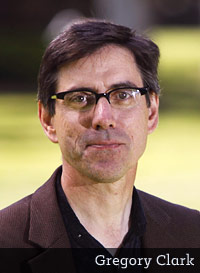
The Son Also Rises: Surnames and the
History of Social Mobility
with Dr. Gregory Clark
Sun., Mar., 16, 2014 at 2 pm
Baxter Lecture Hall
HOW MUCH OF OUR FATE is tied to the status of our parents and grandparents? How much does this influence our children? More than we wish to believe. While it has been argued that rigid class structures have eroded in favor of greater social equality, The Son Also Rises proves that movement on the social ladder has changed little over eight centuries. Using a novel technique—tracking family names over generations to measure social mobility across countries and periods—renowned economic historian Gregory Clark reveals that mobility rates are lower than conventionally estimated, do not vary across societies, and are resistant to social policies. Read more…
Order The Son Also Rises from Amazon.
TICKETS are first come, first served at the door. Seating is limited. $10 for Skeptics Society members and the JPL/Caltech community, $15 for nonmembers. Your admission fee is a donation that pays for our lecture expenses.

NEW ON SKEPTICBLOG.ORG
Sagan Versus the Flying Saucers (an Excerpt from Junior Skeptic 50)
In celebration of the premiere of Cosmos: A Spacetime Odyssey on March 9, 2014, Daniel Loxton shares a short excerpt from Junior Skeptic 50’s look back at Carl Sagan0’s life in skepticism.
CBC Interview on Carl Sagan
Listen to a March 4th CBC interview with Junior Skeptic editor Daniel Loxton about why astronomer Carl Sagan still matters.
Rob Breakenridge Interview on Carl Sagan
Listen to a March 10th interview with Daniel Loxton on The Rob Breakenridge Show, News Talk 770 (Calgary) & 630CHED (Edmonton).
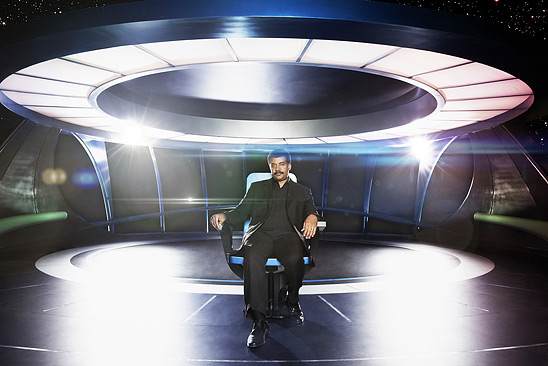
Neil deGrasse Tyson on Cosmos: A Spactime Odyssey. Copyright 2014 FOX BROADCASTING.
Photo credit: Patrick Eccelsine/FOX
About this week’s eSkeptic
Pseudoscience runs rampant in much of the popular media, reducing science to stereotypes of evil mad scientists. With the recent reboot of Carl Sagan’s Cosmos documentary, we see the return of science popularization in a manner that inspires people (especially children) to be fascinated by science, to think about careers in science, and to pass Sagan’s mantle on to another generation. In this week’s eSkeptic, scientist and educator Donald Prothero reviews the first episode of Cosmos: A Spacetime Odyssey, which premiered March 9, 2014.
Share this article with friends online.
Subscribe | Donate | Watch Lectures | Shop
Cosmos Reboots
by Donald Prothero
Like many scientists, for over a year I’ve been anxiously awaiting the first episode of the new version of Cosmos, hosted by Neil deGrasse Tyson. A reboot of the classic series originally hosted by Carl Sagan in 1980, this version is co-written and co-produced by Sagan’s widow Ann Druyan (who co-authored the original Cosmos along with Steven Soter and Sagan). It is also co-produced by Family Guy creator Seth MacFarlane and by Jason Clark (producer of 42, Ted, and the newly released Mr. Peabody and Sherman, which premiered the same weekend; he’s married to former actress Kimberly Beck, a high-school classmate of mine). I figured with these people at the helm, and Tyson as the spokesperson, they would not disappoint. But I was not prepared for how amazing the first episode turned out, even given those high expectations.
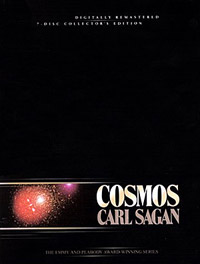
Cosmos: A Personal Voyage
Order the 13-part documentary
on DVD from Shop Skeptic
Cosmos aired on Sunday, March 9, on Fox, which had me a bit concerned, given the political bent of their news network, but this was because MacFarlane has good connections at Fox thanks to the success of Family Guy. As the evening started, I was watching my Facebook feed and Twitter to see the reactions from those who saw it in all the time zones before I got my chance in Pacific Daylight Time. I was a bit worried to see a few of my Facebook friends didn’t like the show, but overall it seemed that most of them loved it. Finally, we got the kids to bed and it aired at 9:00 p.m. our time. This is mighty late if they wanted to reach anyone under the age of 12, or for early-to-bed, early-to-rise people like me who get up before 6:00 a.m. It is especially so since we had just gotten the change to Daylight Saving Time that same morning, and most of our biological clocks were out of whack.
But I needn’t have worried. The new Cosmos is amazing!!! In many ways, it hews strongly to the format of the Sagan original. It starts with Tyson on the same cliff in northern California where Sagan began his first episode, and talks about the impact of that amazing series, now almost 35 years ago. It uses a “Spaceship of the Imagination” to zoom through an animated version of the universe, although Tyson’s spaceship is much more high-tech than Sagan’s, and the stunning high-definition CG animation in this series reflects the huge advance in computer animation since 1980. The middle segment talks about an important episode in history and how it reflects on our understanding of the universe. Sagan talked about the Library of Alexandria, and its destruction, clearly a metaphor for how our society only valued science as a tool for mass destruction; he confidently felt that we would be still pushing the limits of space exploration for a long time to come. The new Cosmos, however, comes at a time of unprecedented religious and political attacks on science and its values, and at a time when we’ve all but abandoned space except for two Mars rovers and a few probes still passing the outer planets. The new Cosmos includes the story of Giordano Bruno and how the forces of religion and ignorance oppressed, tortured, and then martyred him. There is also a brief nostalgic mention of the Voyager probe that Sagan helped launch back in 1976, now at the outer limits of the solar system and still beaming signals back to us. It even mentions the recording that Sagan put together with a short sound bite from a blues singer on that record….
After the cliff-top opening and the zoom through the universe in the new “Spaceship of the Imagination,” however, Tyson goes further than did Sagan. He goes all the way back in space-time to the Big Bang, and the cruise through our “cosmic address” more strongly emphasizes the insignificance of earth and humans on the scale of the cosmos, much more so than Sagan did. At the end of the first episode, he gives us an analogy of the 13.8 billion years of cosmic history as Sagan did, squeezed into a single 365-day calendar year. This is the exact same analogy I use at the start of every geology course I teach (although I only squeeze the 4.6 billion years of earth history into 365 days). Both of these analogies and descriptions have a powerful effect of humbling our cosmic arrogance and giving people the sense that scientists have always had: that humans and human history are insignificant when viewed in this perspective. The final few seconds has a powerful, emotionally satisfying ending as Tyson reveals his own connection to Sagan, and how Sagan changed his life, and how scientists pay it forward, and pass on their inspiration and dedication to future scientists.
As a scientist and educator, I loved the approach and found nothing about the first episode that I could nit-pick about. The main drawback of having it on a commercial network, however, is that the frequent cuts to commercials disrupts the continuity of the episode. But I recognize the reality as well: most households (especially lower-income households) may not be able to get basic cable channels or premium pay channels, and this is a necessary sacrifice to make it available to the widest possible audience on a major network instead. After all, the goal is to reach people who know little about science or the cosmos, as Sagan did so well (even though his show was on PBS, with even less reach). Most of the critical comments I read on my Facebook page before my air-time were about this problem. Or they were from people who expected new, ground-breaking science in the first episode, which is ridiculous: this show is intended for an audience that isn’t science literate or even interested in science, and the producers must keep it simple and flashy to reach them—especially in the first episode, which is really just a teaser and scene-setter, anyway.
About the only negative reviews I’ve been able to find since the first episode aired are from the religious folk who don’t like the implications and tone of the series and how it offends their theistic fantasies. This is indeed an important difference between this version and Sagan’s version of Cosmos: the approach to religion. The Sagan quotes about “we are all starstuff” and “the cosmos is all there ever was, there is, and there ever will be” are repeated, which certainly does not sit well with religious folks. And the humbling effect of “the cosmic zoom” and the cosmic calendar analogy, and how they make humans look insignificant, are still there as well. But their choice of Bruno’s martyrdom says loud and clear their message about how religion and other received dogmas should never interfere with science and the progress of human knowledge, while Sagan tiptoed around that issue. Even the deliberate choice of the style in which the Bruno story was animated, with its low-budget, harsh, simplistic animation (in contrast to the amazing CG animation of the universe) sends an even more subtle message. Clearly, the producers and Tyson are not going to kowtow to bigots who want the harsh reality of our cosmic insignificance hidden from their faithful flocks. Given the current hostile climate where religion and politics have made horrific inroads not only into our science literacy, but especially into the public attitude toward science and scientists, this is no time to tone it down and let them claim victory over scientific reality.
Indeed, that is the real message of Cosmos: science is fun, inspiring—but also humbling and life-changing. As Sagan’s original captured the wonder of the universe without sugarcoating the real implications, so Tyson’s version is equally strong in that regard. As we watch science in most media reduced to stereotypes of evil mad scientists, and outside forces attacking science education, and the general culture idolizing celebrities and athletes rather than scholars, and pseudoscience running rampant through basic cable channels that used to be dedicated to documentaries and education, we need Cosmos now, more than ever. We need shows that inspire people (especially kids) to be fascinated by science, and thinking about careers about science, so that Tyson can “pay it forward” to them and pass Sagan’s mantle on to another generation. Almost 99% of TV now is mind-numbingly bad or outright false and misleading. We need at least one hour a week where people can get scientific reality with a big dose of fun. Fortunately, with Cosmos, and with Neil Shubin’s Your Inner Fish due in another month, we are getting the first big media push back against pseudoscience and ignorance in a long time. That, along with Bill Nye’s victory over Ken Ham and his creationist claptrap, gives me some hope that the media can be used for good, rather than for spreading ignorance and pseudoscience. It’s about time! ![]()

MonsterTalk # 79
Plesiosaur Parenting
In this episode of MonsterTalk, Blake interviews Junior Skeptic author/artist Daniel Loxton on the final book in his prehistoric animal thrillogy, Plesiosaur Peril. We talk about dinosaur names, raising kids with science literacy, and the reboot of Cosmos.
Get the MonsterTalk Podcast App (presented by Skeptic Magazine) and enjoy the science show about monsters on your handheld devices! Available for iOS, Android, and Windows 8 devices. Subscribe to MonsterTalk for free on iTunes. Follow the RSS feed.
Linda & Thomas Spilker,
on Vimeo On Demand
How To Boldly Go into Space:
An Insider’s Look into Space Missions
Drawing on their decades of work for NASA and the Jet Propulsion Laboratory (JPL) Drs. Linda and Thomas Spilker give us an inside view of what goes into the unmanned space program, from the origin of a space mission, to how the funds are found to finance it, to how the spacecraft is designed and built, and to the launching and running of such a mission, often designed to last for years and even decades. How do you get a spacecraft to Saturn, anyway? Who decides what it should study when it gets there? What happens when something goes wrong? And, as a society, why do we explore the solar system (and beyond) and what do we learn from it? Don’t miss this revealing account of what rocket scientists do.… Read more…
Rent this video for only $3.95
or explore the entire series.
INSTRUCTIONS: Click the button above, then click the RENT ONE button on the page that will open in your Internet browser. You will then be asked to login to your Vimeo account (or create a free account). Once you complete your purchase of the video rental, you will then be able to instantly stream the video to your computer, smartphone, or tablet, and watch it for the rental period. Videos play best on Vimeo when you allow the entire video to buffer before viewing it.


